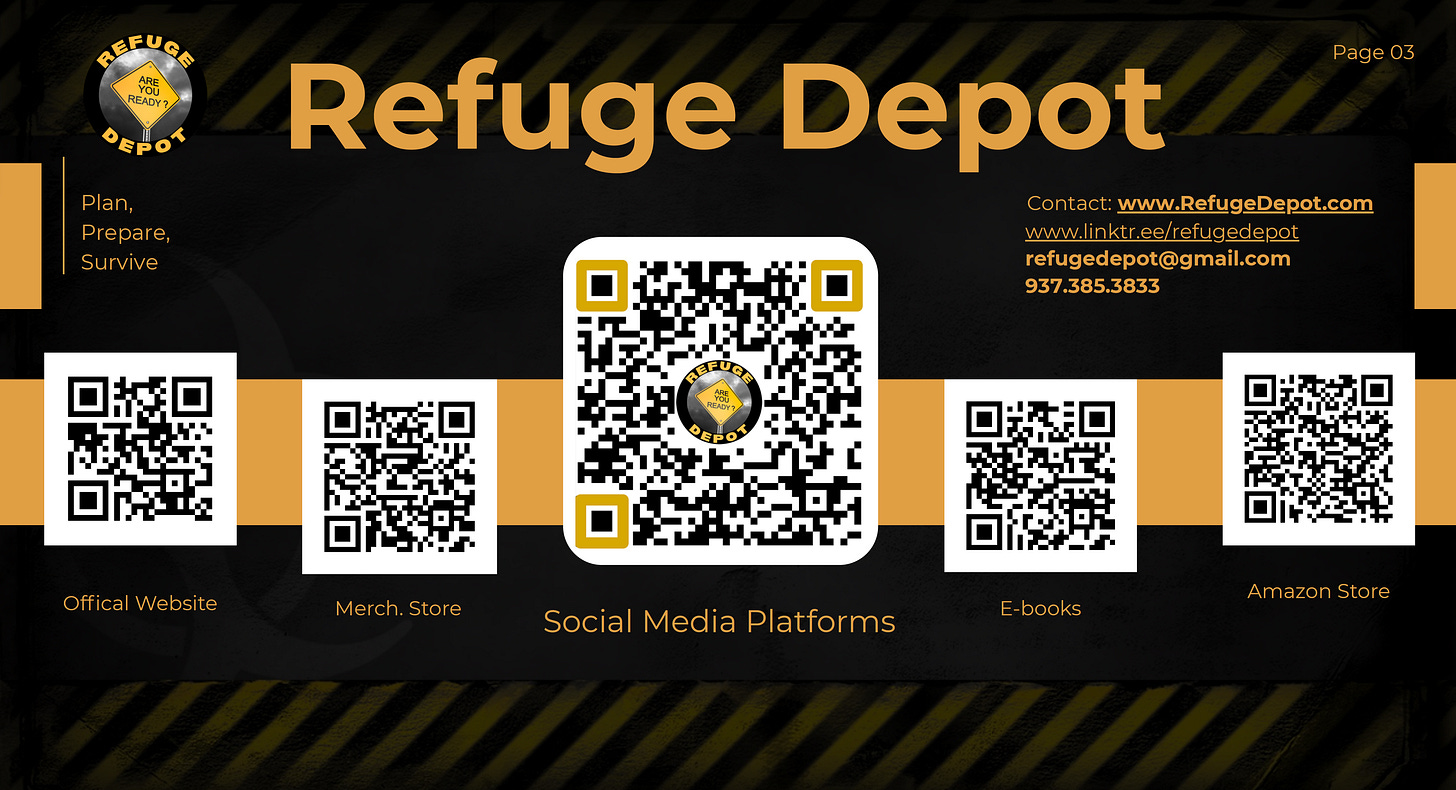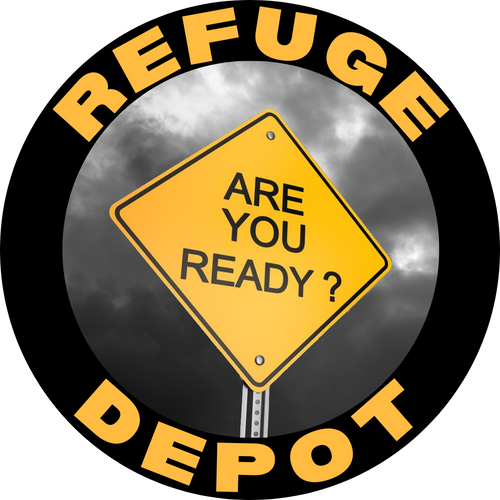
Why Black Communities Need Their Own Natural Disaster Preparedness Guide: A Wake-Up Call
Share
This is the introduction to our new series examining natural disaster risks and preparedness in communities with significant Black populations across America.
The Statistic That Should Stop You in Your Tracks
Black Americans are 50% more likely to live in areas prone to climate disasters. Read that again. This isn't by choice—it's by design. And when disaster strikes, the impact isn't equal.
Over the next several weeks, we're diving deep into something that mainstream media barely touches: how natural disasters disproportionately impact Black communities across America. This isn't just about weather—it's about justice, preparedness, and community survival.
The Hurricane Katrina Wake-Up Call
Let's start with why this series exists. August 29th, 2005. Hurricane Katrina makes landfall in Louisiana. What happened next wasn't just a natural disaster—it was a case study in how America fails its most vulnerable communities.
The Lower Ninth Ward, predominantly Black and low-income, was devastated. Not because the hurricane was stronger there, but because the levees failed, the evacuation plans were inadequate, and the recovery resources never came. Families waited on rooftops for days. People died not from the storm, but from the response—or lack thereof.
Nearly twenty years later, some of these communities still haven't fully recovered. That's not an accident. That's a pattern we see repeated across the country every time disaster strikes.
Eight States, Eight Stories of Risk and Resilience
We're examining eight states with significant Black populations, breaking down exactly what natural threats each community faces, why they're more vulnerable, and most importantly, what we can do about it.
Louisiana: Still Sinking After All These Years
- Primary Hazards: Hurricanes, flooding, subsidence
- Key Communities: New Orleans, Baton Rouge, Lafayette
- Historical Events: Katrina (2005), Ida (2021), ongoing flooding events
- Special Considerations: Below sea level areas, petrochemical industry impacts
Hurricane Ida in 2021 showed us that twenty years after Katrina, the same communities are still bearing the brunt of disaster. New Orleans continues to sink while hurricane intensity increases.
Florida: Paradise Under Pressure
- Primary Hazards: Hurricanes, flooding, extreme heat
- Key Communities: Miami-Dade, Jacksonville, Tampa, Orlando
- Historical Events: Andrew (1992), Irma (2017), Ian (2022)
- Special Considerations: Sea level rise, urban heat islands
From the historic Overtown neighborhood in Miami to Jacksonville's Eastside, Black communities face increasing risks from both storm surge and extreme heat.
Georgia: Where Different Worlds Collide
- Primary Hazards: Hurricanes, tornadoes, flooding, ice storms
- Key Communities: Atlanta metro, Savannah, Albany, Columbus
- Historical Events: 1994 ice storm, Hurricane Michael (2018)
- Special Considerations: Urban vs. rural preparedness gaps
Georgia's diversity in geography means communities face vastly different threats—from coastal hurricanes in Savannah to ice storms that can shut down Atlanta for days.
South Carolina: History Meets Hazard
- Primary Hazards: Hurricanes, flooding, tornadoes
- Key Communities: Charleston, Columbia, Greenville
- Historical Events: Hugo (1989), Florence (2018), historic flooding (2015)
- Special Considerations: Historic districts and older housing stock
Charleston's historically Black neighborhoods often occupy the lowest-lying areas, making them especially vulnerable to the flooding that comes with hurricanes and king tides.
North Carolina: Mountains to Sea
- Primary Hazards: Hurricanes, flooding, winter storms, tornadoes
- Key Communities: Charlotte, Greensboro, Durham, Wilmington
- Historical Events: Floyd (1999), Florence (2018), ice storms
- Special Considerations: Mountain vs. coastal hazards
From the hurricane-prone communities along the coast to the ice storm risks in the mountains, North Carolina's Black communities face diverse and complex threats.
Alabama: In the Heart of Tornado Alley
- Primary Hazards: Tornadoes, hurricanes, flooding
- Key Communities: Birmingham, Mobile, Montgomery, Huntsville
- Historical Events: 2011 tornado outbreak, Hurricane Ivan (2004)
- Special Considerations: Mobile home vulnerability, rural isolation
The 2011 tornado outbreak devastated communities across Alabama, with mobile home residents—disproportionately Black and low-income—facing the highest fatality rates.
Mississippi: Still Recovering
- Primary Hazards: Hurricanes, tornadoes, flooding
- Key Communities: Jackson, Gulfport, Hattiesburg
- Historical Events: Katrina (2005), 2011 tornado outbreak
- Special Considerations: Rural poverty and preparedness challenges
Mississippi continues to struggle with disaster recovery resources, leaving many communities vulnerable to the next hurricane or tornado outbreak.
Texas: Everything's Bigger, Including the Risks
- Primary Hazards: Hurricanes, flooding, extreme heat, winter storms
- Key Communities: Houston, Dallas, San Antonio, Austin
- Historical Events: Harvey (2017), Winter Storm Uri (2021)
- Special Considerations: Urban flooding, power grid vulnerabilities
Hurricane Harvey showed how urban flooding can trap entire communities, while Winter Storm Uri revealed dangerous gaps in the power grid that disproportionately affected communities of color.
Why This Content Matters
Here's what makes this different from other disaster preparedness content: we're not just talking about having a go-bag and a flashlight. We're talking about systemic vulnerabilities that make certain communities more at risk, and community-based solutions that actually work.
Black communities have always been resilient. From mutual aid networks to church-based disaster response, our communities know how to take care of each other. We just need the right information and resources to do it effectively.
The Path Forward
This isn't fear-mongering—this is empowerment through information. In each upcoming deep-dive, we'll examine the specific threats each state faces, look at the historical disasters that have impacted Black communities, and most importantly, provide practical preparedness information that could save lives.
We'll talk to community leaders, emergency management officials, and survivors who've been through it. Because here's the truth: mainstream preparedness companies and programs aren't designed with us in mind. They don't understand our unique challenges, our housing patterns, our economic realities, or our cultural strengths.
Knowledge is power, and preparedness is survival. When disaster strikes—and it will—our communities need to be ready with information and strategies designed specifically for our needs.
Next week, we're starting our deep-dive series with Louisiana, where the lessons of Katrina continue to unfold with each passing hurricane season.
Support the Plan, Prepare, Survive Campaign
 Creating research-based preparedness content specifically designed for Black communities takes time, resources, and dedication. Mainstream preparedness programs weren't built with our unique challenges in mind—they don't account for our housing patterns, economic realities, or cultural strengths. That's exactly why we launched the Plan, Prepare, Survive campaign.
Creating research-based preparedness content specifically designed for Black communities takes time, resources, and dedication. Mainstream preparedness programs weren't built with our unique challenges in mind—they don't account for our housing patterns, economic realities, or cultural strengths. That's exactly why we launched the Plan, Prepare, Survive campaign.
Our Mission
Our mission is simple but critical: provide preparedness education specifically tailored to the Black community's needs. We're talking about real solutions for real people—whether you're in a historic neighborhood in Charleston that floods, a mobile home community in Alabama's Tornado Alley, or an urban area in Houston dealing with power grid failures.
This isn't just about individual preparedness—it's about community resilience. When disaster strikes, we take care of each other. But we need the right information to do it effectively.
How You Can Help
Show Your Support: Get one of our Plan, Prepare, Survive t-shirts from our Refuge Depot Shopify store. Every shirt sold helps fund our research and production, plus it starts conversations in your community about preparedness.
Join Our Community: Support our work on Substack or Patreon for just $3 a month—less than a cup of coffee. Your support helps us dive deeper into research, interview community leaders, and create comprehensive preparedness guides.
What Your Support Makes Possible
Your contribution enables us to:
- Travel to affected communities to interview survivors and local leaders
- Access premium weather data and emergency management research
- Create downloadable preparedness guides specific to each state and hazard type
- Keep this content free and accessible to everyone who needs it
This isn't charity—this is investment in our community's survival and resilience. Every family that's better prepared because of this content, every community that responds more effectively to disaster, every life that's saved because someone had the right information at the right time—that's the return on your investment.
We've always taken care of each other in our communities. From the Underground Railroad to mutual aid during civil rights struggles to church networks that respond to disasters—community care is in our DNA. This is just the modern version of that same spirit.
Join Us

If you believe our communities deserve preparedness education designed specifically for our needs, then join the Plan, Prepare, Survive campaign. Get a t-shirt, join our Substack or Patreon, and help us continue producing content that could save lives.
Visit our Refuge Depot Shopify store and find our Substack links below. Your support—whether it's three dollars a month or sharing this article with your family—makes this work possible.
Because when it comes to disaster preparedness, we can't afford to be an afterthought. We need to plan for ourselves, prepare for ourselves, and ensure our communities survive and thrive.

